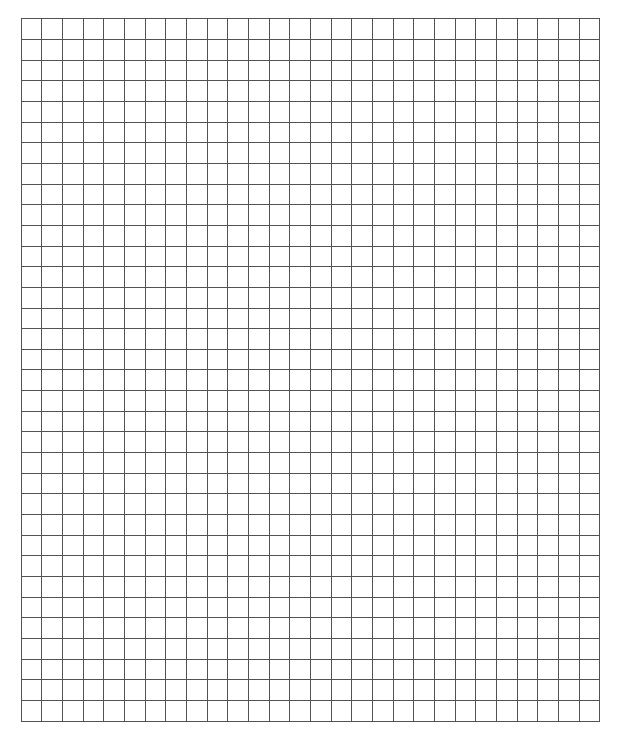5. C modeling#
5.1. Characteristics of modeling#
Method UPWIND is used by PROPA_FISS to solve the crack propagation equations. A auxiliary grid is used because the mesh type of the structure’s mesh cannot be used by the UPWIND method.
The same model as that described for modeling A is used.
5.2. Characteristics of the mesh#
For the structure, the same mesh as that of modeling A. is used.
The auxiliary grid used is composed of 952 elements QUAD4 (see figure).

Figure 5.2-a : auxiliary grid
The element dimension is \(0.5\times 0.5\mathrm{mm}\).
The grid is extended to the only area of the structure that is interested in propagating the crack.
5.3. Tested sizes and results#
The position of the bottom of the crack cannot be recovered in the command file and therefore it is not possible to check directly whether the solution calculated by the fast marching method is consistent with the reference solution. However, it can be verified that the bottom of the crack is in the same element that contains the bottom of the crack in the reference solution. In fact, the distance between the crack background and each node of this element is given by the value of the level sets and we can say that the crack background is contained in the element if the value of the level sets on these nodes is less than the length of the largest edge of the element.
The reference element nodes are: \(\mathrm{N304}\), \(\mathrm{N1040}\), and \(\mathrm{N1512}\). The length of the element’s longest edge is \(2.0\mathrm{mm}\). This value is used as a tolerance on the value of the level sets.
The value of the level sets at each node can be retrieved from the command file using the POST_RELEVE_T operator:
Knot |
LSN [\(\mathrm{mm}\) ] |
LST [\(\mathrm{mm}\) ] |
\(\mathit{N304}\) |
-0.772 |
-1.436 |
\(\mathit{N1040}\) |
1.22 |
-1.72 |
\(\mathit{N1512}\) |
0.719 |
-0.242 |
5.4. notes#
All tested values respect the tolerance used. This means that the position of the crack bottom calculated by method UPWIND is very close to the reference one.